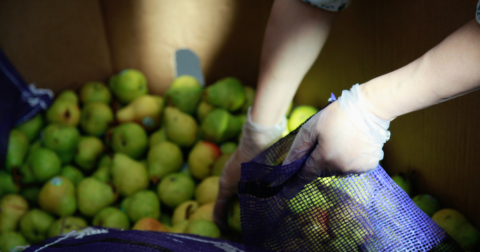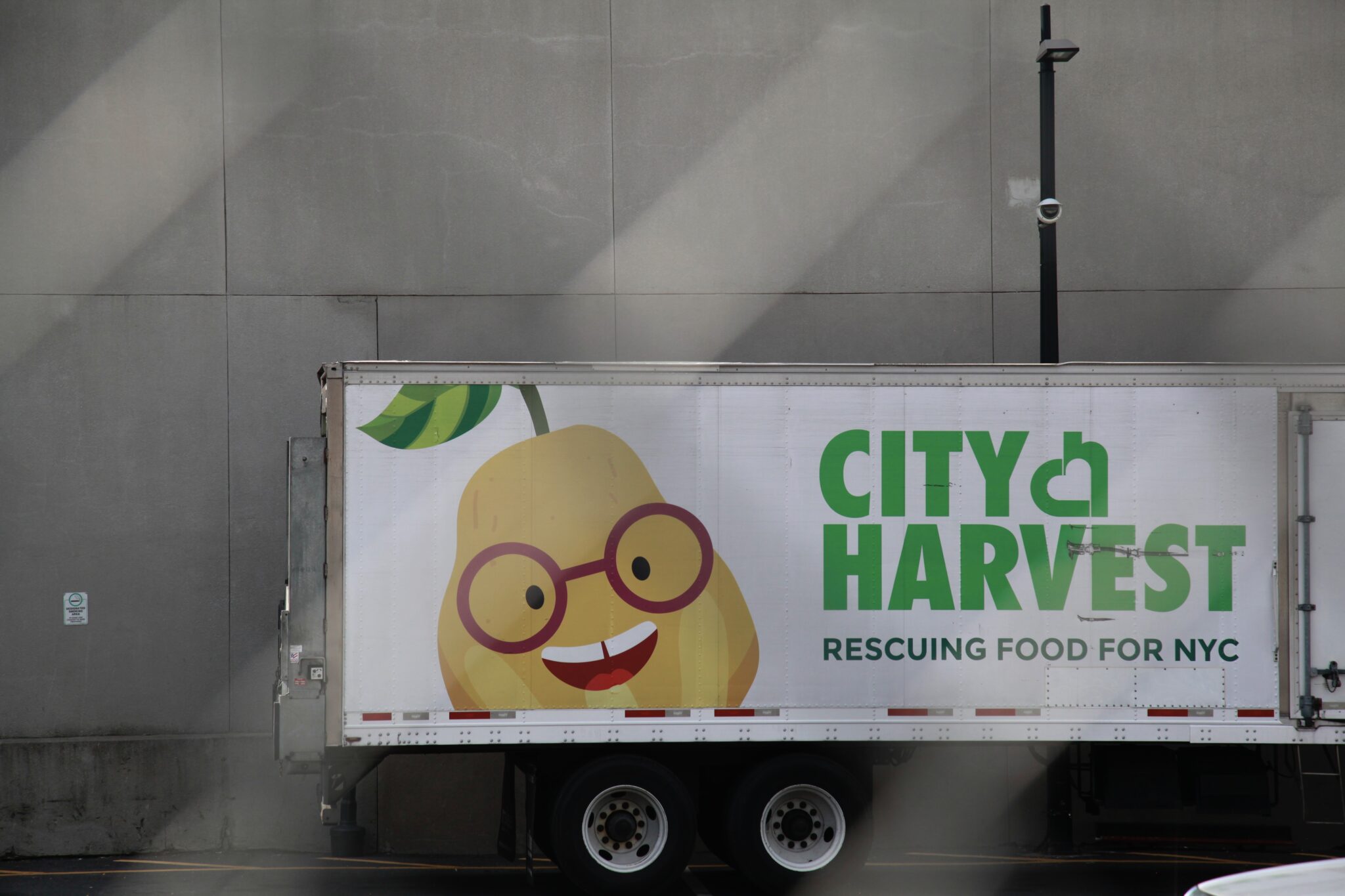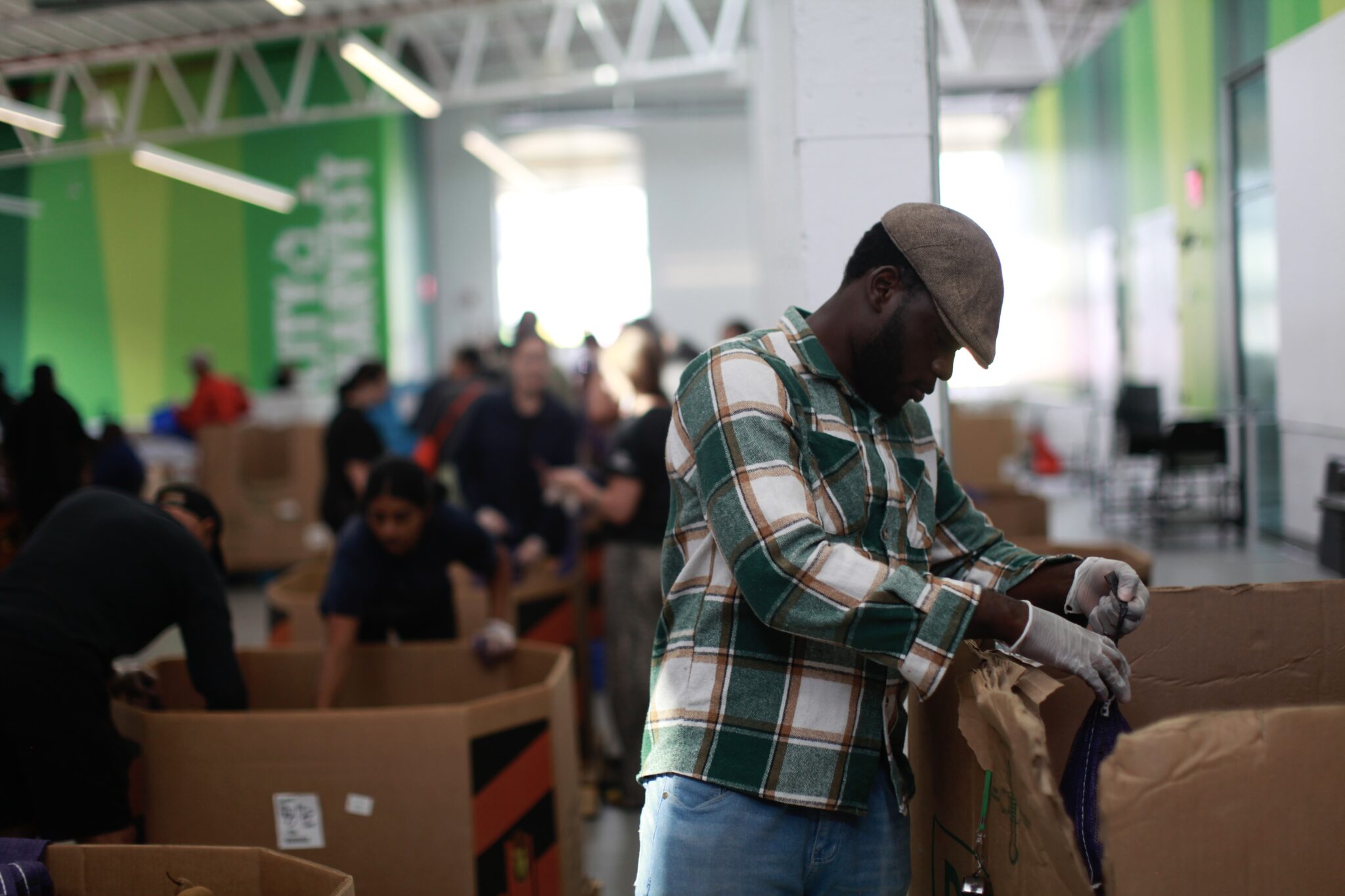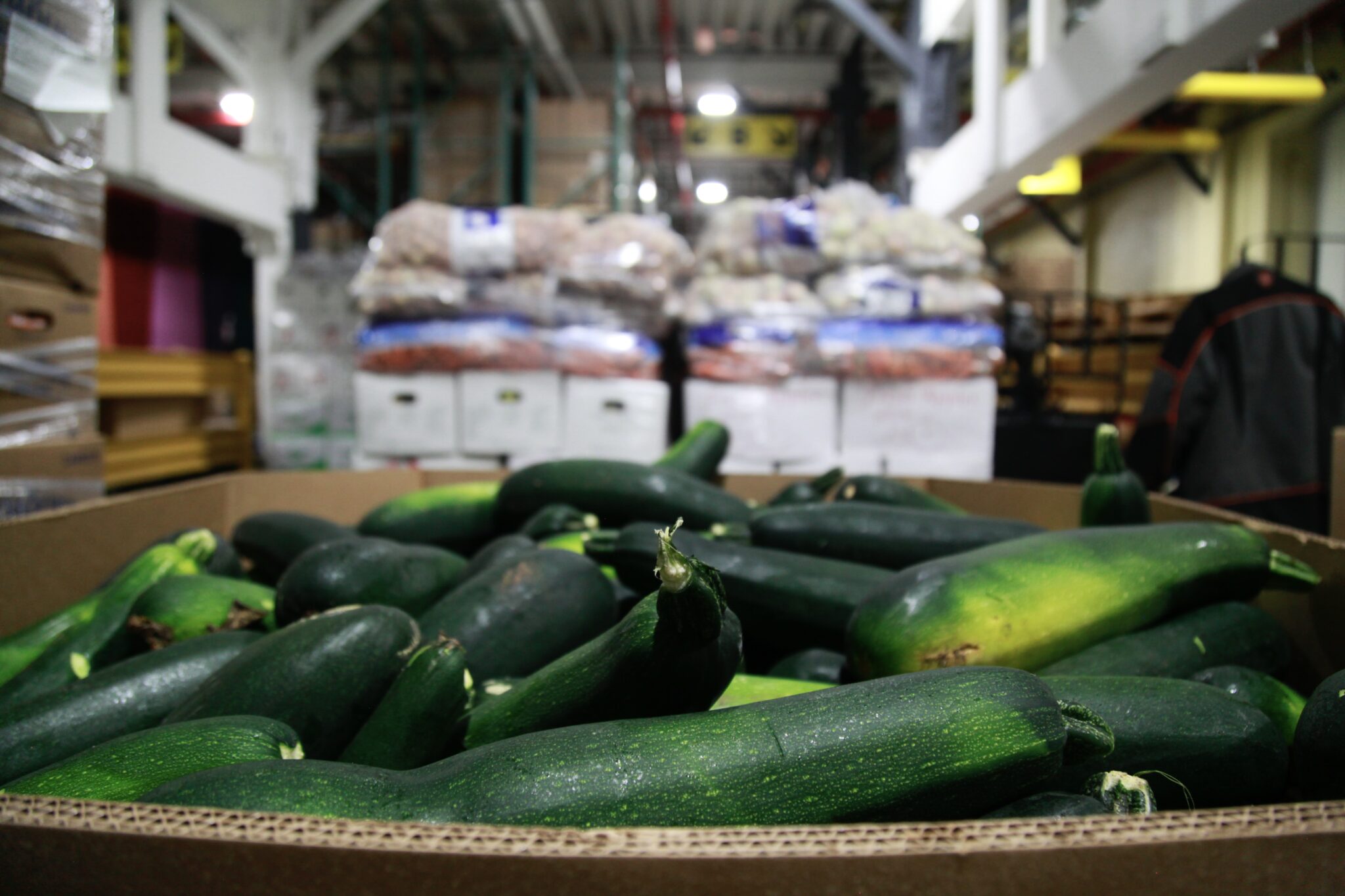News
COP30 Has Big Plans to Save the Rainforest. Indigenous Activists Say It’s Not Enough.
Climate•6 min read
Feature
City Harvest’s food rescue efforts are a win for both climate and food insecurity.

Feature • Climate • Food Waste

Words by Gaea Cabico
This story is a partnership between Floodlight and Sentient, with visual reporting by Floodlight’s Evan Simon. Sign up for Floodlight’s newsletter here.
City Harvest is more than 40 years old, but it’s never been more needed than it was over the last month.
The work of City Harvest, New York City’s largest food rescue organization, took on new urgency when the recent government shutdown cut off funding for the Supplemental Nutrition Assistance Program (SNAP), which serves roughly 42 million Americans.
City Harvest’s work tackles two issues of vital importance right now: food insecurity and climate change, both aggravated by policy decisions made by the Trump administration. Though the shutdown ended on November 12 after a record 43 days, SNAP is still subject to more unprecedented cuts thanks to the so-called “mega-bill” signed into law in July. Some of those permanent cuts are already in force, which means the need for nutritious food in New York City will only continue to grow, Jenna Harris, associate director of City Harvest’s donor relations and supply chain team, tells Sentient.
It may sound paradoxical but despite rising food insecurity, food waste continues to be a massive problem both nationwide and globally. Only about 12% of the 14.5 million tons of recoverable food in the United States is donated to organizations like City Harvest. In addition to supplying fresh food to people who need it, food rescue has another, lesser-known benefit: it helps to mitigate the climate crisis by reducing the emissions from food waste. Globally, food waste is responsible for 8-10% of all greenhouse gas emissions — about five times as much as the aviation industry.
On a Tuesday afternoon in July, Jaeok Kim, an associate director for research at the Vera Institute of Justice, wasn’t behind her desk working on criminal justice reform. Instead, she, along with 200 other volunteers, spent the latter half of the day collecting trays of leftover gourmet pastries and tubs of yogurt from the massive Javits Center near Hudson Yards. She scanned surplus food abandoned by vendors at the Specialty Food Association’s summer show. By the end of the day, Kim and her fellow volunteers had saved 84,000 pounds of food.
City Harvest was founded in 1982 when its first executive director, Helen verDuin Palit, learned over a dinner of potato skins that the restaurant was throwing out the insides of the potatoes. The very next day, she organized a donation of 30 gallons of cooked potatoes to a nearby soup kitchen.
Today, City Harvest operates with a fleet of 23 refrigerated trucks, rescues food from around 1,600 donors and delivers to 400 partner agencies across the city. In 2024, City Harvest rescued nearly 79 million pounds of produce, dairy and packaged goods that would have otherwise gone to waste. This year, the organization expects to divert 86 million pounds of food from landfills — preventing the equivalent of 25 million kilograms of carbon dioxide from entering the atmosphere.

Fresh produce makes up 74% of rescued food, providing healthier options than the nonperishable items typically distributed by food banks. One August morning in Brooklyn’s Sunset Park, a line snaked around the block outside City Harvest’s warehouse. Parents and grandparents — many from the neighborhood’s Hispanic and Chinese communities — waited their turn, grocery carts and reusable bags in hand, to collect celery, onions and potatoes at the mobile market. After picking up their produce, several of the residents participated in a cooking demonstration to learn new ways to prepare the food they had just received.
New York City is home to 1.8 million people who rely on SNAP benefits. The demand that surged during COVID never let up, says Harris. “People who never used to rely on emergency food now have to rely on it because they’re just not making enough money to support themselves day to day,” she adds.
The organization’s outdoor, farmers’ market-style distributions were already seeing “record-high visits,” with City Harvest expecting to distribute more than a million additional pounds of food this November compared with last year, Molly Horak, the group’s senior communications manager, tells Sentient in an email.
During the shutdown, City Harvest stepped in to support workers directly hit by the shutdown, distributing 20,000 pounds of produce and pantry staples near LaGuardia and JFK airports, where federal contractors and employees were furloughed or working without pay, as well as to active-duty service members and veterans in Brooklyn and Staten Island.

City Harvest is known for rescuing surplus produce, but the shutdown pushed the nonprofit to broaden its approach. It purchased shelf-stable items such as rice, pasta and peanut butter, which community members would ordinarily use SNAP benefits to buy. “As SNAP recipients navigate delays and disruptions to their payments, they may not be able to use their SNAP benefits to buy those staples, and we want to ensure we are distributing the foods that are most helpful during this time,” Horak writes.
Although the shutdown ended November 12, further SNAP cuts loom. The Trump budget bill referred to as the One Big Beautiful Bill imposed stricter work requirements and reduced SNAP funding by $186 billion over 10 years, or about 20% — the largest cut in the program’s history — which will result in millions losing their benefits. “For every meal that organizations like City Harvest provide, SNAP provides nine,” City Harvest’s chief executive officer Jilly Stephens said in a statement.

With the volume of food it is expected to rescue this year, City Harvest estimates it will prevent 25 million kilograms of carbon dioxide from entering the atmosphere. In the United States, most of the country’s surplus food ends up in landfills, where it decomposes and produces methane, a greenhouse gas 80 times more potent than carbon dioxide over 20 years.
When food is thrown away, everything that went into making it — from farming to processing to transportation and cooking — is wasted as well. Greenhouse gas emissions are released but when food is wasted, no one ends up fed.
Donating excess food is one of the best solutions because it not only prevents food waste emissions, but it also nourishes people. Yet despite the potential, only 12% of food in the United States that could be donated actually reaches people, according to food waste nonprofit ReFED.
Stronger federal and state policies could help unlock the full potential of food rescue and donation, reducing both hunger and climate pollution. The Zero Food Waste Coalition (of which ReFED is a member) recommends that state laws about organic waste incentivize donations by requiring food businesses to participate in diversion and rescue programs. In an analysis published in January, researchers from University of California Davis and ReFED found that state policies tend to emphasize food waste recycling methods (such as composting) and anaerobic digestion more than rescue strategies such as donating to food banks or repurposing food for animal feed, even though the latter are more effective at drawing down emissions.
California is an exception: businesses are required to donate surplus food to recovery organizations instead of throwing it out. The law has contributed to the increase in overall donations and helped some food banks receive more nutritious items like fresh produce, but is not without logistical challenges, a survey by the California Association of Food Banks found.
New York State also mandates donation before composting, but this law does not apply to New York City. New York City’s organics law skips over food donation, directing food waste straight to compost or biogas — a major missed opportunity that leaders at City Harvest hope policy advocacy can change.
More robust policies on food rescue could address both problems, fighting hunger and reducing climate pollution. The vast majority of greenhouse gas emissions from food waste happen when the food is produced, so every piece of edible food saved from the landfill reduces those emissions. Cutting down on food waste is one of the most practical ways to mitigate global warming: Project Drawdown calls it an “emergency brake” solution. Last year, 55 member organizations of the Global Food Banking Network diverted 512 million kilograms of edible food away from landfills, preventing an estimated 1.9 million metric tons of carbon dioxide-equivalent emissions. That’s roughly the annual emissions of about 400,000 gasoline-powered cars.
Barriers to donating surplus food include fears of liability, limited awareness about what can legally be donated and confusion over date labels, says Steven Deheeger, associate director of advocacy at City Harvest. “Even when we rescue perfectly good food and we pass that on to the 400 partners that we work with, they sometimes won’t accept the food because they’re unsure whether they can serve it to their communities,” Deheeger tells Sentient.
Roughly 6% of all food waste in the U.S. stems from misconceptions about date labels. Adopting a standardized two-label system — “Best if Used By” to signal peak quality, and “Use By” for highly perishable or potentially unsafe products — could prevent large volumes of edible food from being thrown away, he adds.
In 2023, former President Joe Biden signed the Food Donation Improvement Act, updating a 1996 law that established civil and criminal liability protections for food donors who gave food in good faith to nonprofits. The new law expands those protections to include direct donors — such as schools, restaurants, caterers, grocery stores and farmers — who provide safe, edible food directly to individuals or groups, not just nonprofits. It also extends protections to nonprofits and other organizations that offer donated food at a low cost to help cover expenses like storage, transportation and staffing.
While the law was a welcome step, clear guidance on food safety and donations remains limited to meat and poultry, says Emily Broad Leib, director of the Harvard Food Law and Policy Clinic. The FDA needs to issue more complete guidance, Broad Leib says. States can publish their own guidance, but having federal language that states could adopt would allow states to move more quickly.
Saving food from landfills is a strong win for both climate and hunger, but not enough to address food insecurity at its current scale. Millions of people in the United States still struggle to afford meals. To truly ensure access to nutritious food for all, there must be fairer wages, more job opportunities and stronger food and nutrition programs like SNAP, Pamela Koch, faculty director of the Laurie M. Tisch Center for Food, Education and Policy at Columbia University’s Teachers College, argues in an email to Sentient. While food rescue groups can help, writes Koch, they cannot fix the inequities that create hunger in the first place.